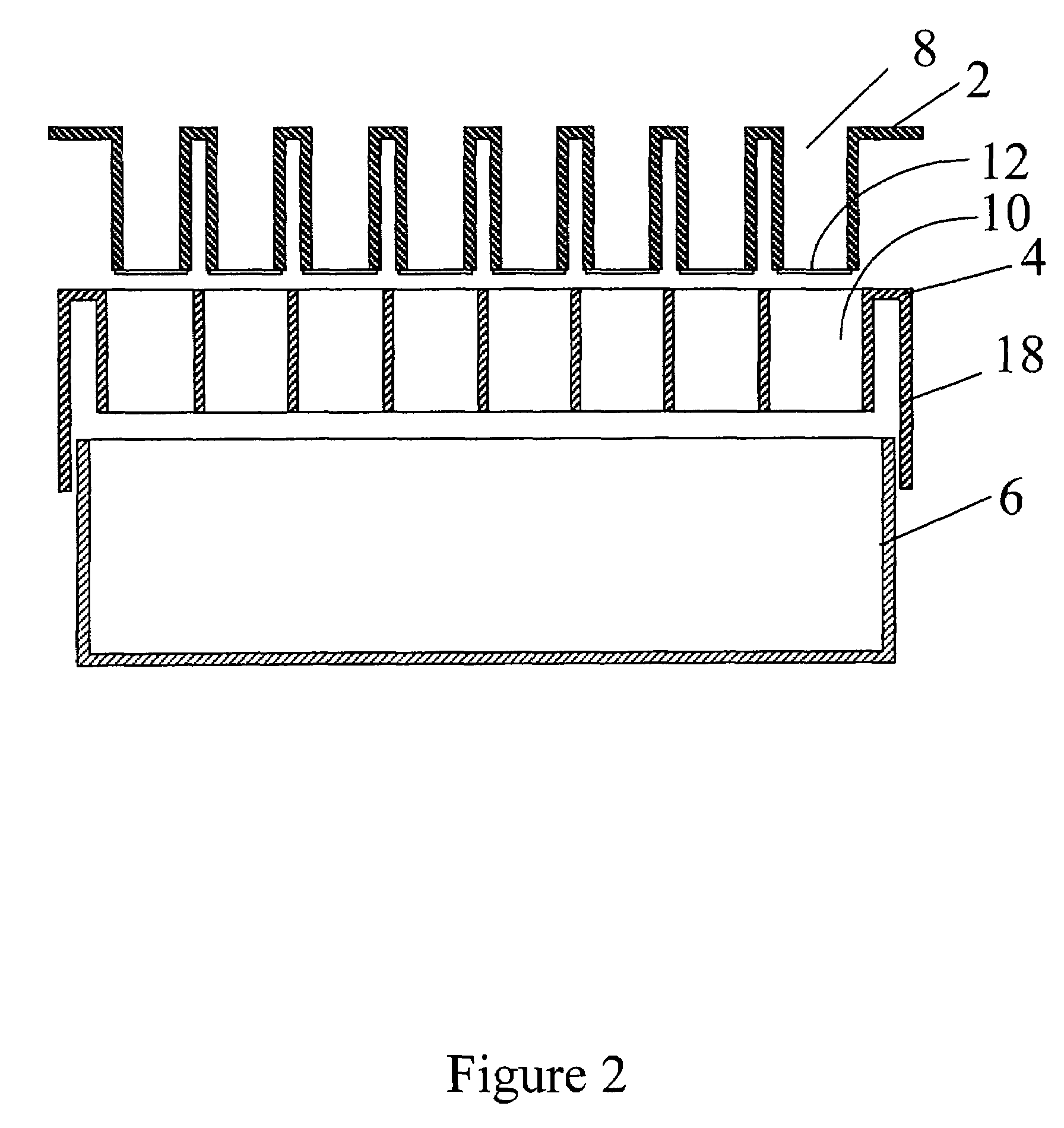High throughput cell-based assays, methods of use and kits
a cell-based assay and high-throughput technology, applied in the field of high-throughput cell-based assays, methods of use and kits, can solve the problems of limited number of tubes, time-consuming process, complicated immunoassays, etc., and achieve the effect of high cell retention
- Summary
- Abstract
- Description
- Claims
- Application Information
AI Technical Summary
Benefits of technology
Problems solved by technology
Method used
Image
Examples
example 1
[0094]Gravity based filtration of cells for cell-based assays was conducted using the following protocol:
[0095]Jurkat cells (T-lymphoblastic cell line) were cultured on two 96 well filter plates containing a 3 micron pore size hydrophilic polycarbonate filter, (100 μL final volume, in complete media containing 10% FCS (fetal bovine serum): the assay contained 100,000 cells per well.
[0096]On the day of assay, the bottom of each filter plate was pre-wetted using PBS, and placed into a carrier plate.
[0097]The assembled devices were then placed onto a liquid filtrate collector.
[0098]Cells were washed by adding 200 μl of wash buffer (PBS containing 1% FBS or BSA) per well.
[0099]Once the wash buffer was added to the wells, the liquid started to drain out of the wells forming droplets and dropped into the collector via gravity (while cells were retained inside of the wells). Drained out liquid was collected in the liquid collector.
[0100]After about 2 minutes equilibrium was reached where n...
example 2
[0107]In this example, cells were tested according the protocol of Example 1 and compared to the washing of cells prepared by the vacuum process of US 2001 / 0055776A1.
[0108]For the method of the present invention the cells were washed 6 times.
[0109]For the vacuum method, a 0.4 micron pore size polycarbonate filter plate was used and washed 3 times at about 5 inches of mercury as described by the referenced application above.
[0110]Remaining cells in both plates were measured by ATP based luminescent measurement.
[0111]As shown in FIG. 9, the number of cells input into each well is listed below the X axis of the graph. The percentage of recovery is shown respectively for the method and device according to the present invention and that of the prior art. Line bars extending from the solid bars represent the variation that was found in the individual wells as compared to the average shown by the solid bars of the graph. As can be clearly seen, the present invention provided surprising and...
example 3
[0112]Cell based apoptosis assay was performed using gravity based filtration.
[0113]Exposure of live cells to fluorochrome-labeled inhibitors of caspases (FLICAs) resulted in uptake of these reagents by apoptotic cells as FLICAs bind to activated caspases (Smolewski et al., 2001). Cells were treated with increasing concentration of well-known apoptosis inducer (Staurosporine) for 2 hours at 37° C. After induction, cells were treated with FLICA. Unbound FLICAs were removed from the nonapoptotic cells by gravity washing the cells with wash buffer 4 times. After gravity washing cells labeled with FLICAs (FAM-VAD-FMK, pan-caspases FLICA) was examined by flow cytometry.
[0114]Shown in FIGS. 10A and B are flow cytometric histograms of FAM-VAD-FMK stained cells from induced (10, 0.63, 0.06 microMolar of Staurosporine) and non-induced control samples. Increase in apoptotic cell population (green populations of each histogram) as a function of increasing concentration of the inducer (Staurosp...
PUM
| Property | Measurement | Unit |
|---|---|---|
| pore size | aaaaa | aaaaa |
| pore size | aaaaa | aaaaa |
| diameter | aaaaa | aaaaa |
Abstract
Description
Claims
Application Information
 Login to View More
Login to View More - R&D
- Intellectual Property
- Life Sciences
- Materials
- Tech Scout
- Unparalleled Data Quality
- Higher Quality Content
- 60% Fewer Hallucinations
Browse by: Latest US Patents, China's latest patents, Technical Efficacy Thesaurus, Application Domain, Technology Topic, Popular Technical Reports.
© 2025 PatSnap. All rights reserved.Legal|Privacy policy|Modern Slavery Act Transparency Statement|Sitemap|About US| Contact US: help@patsnap.com



